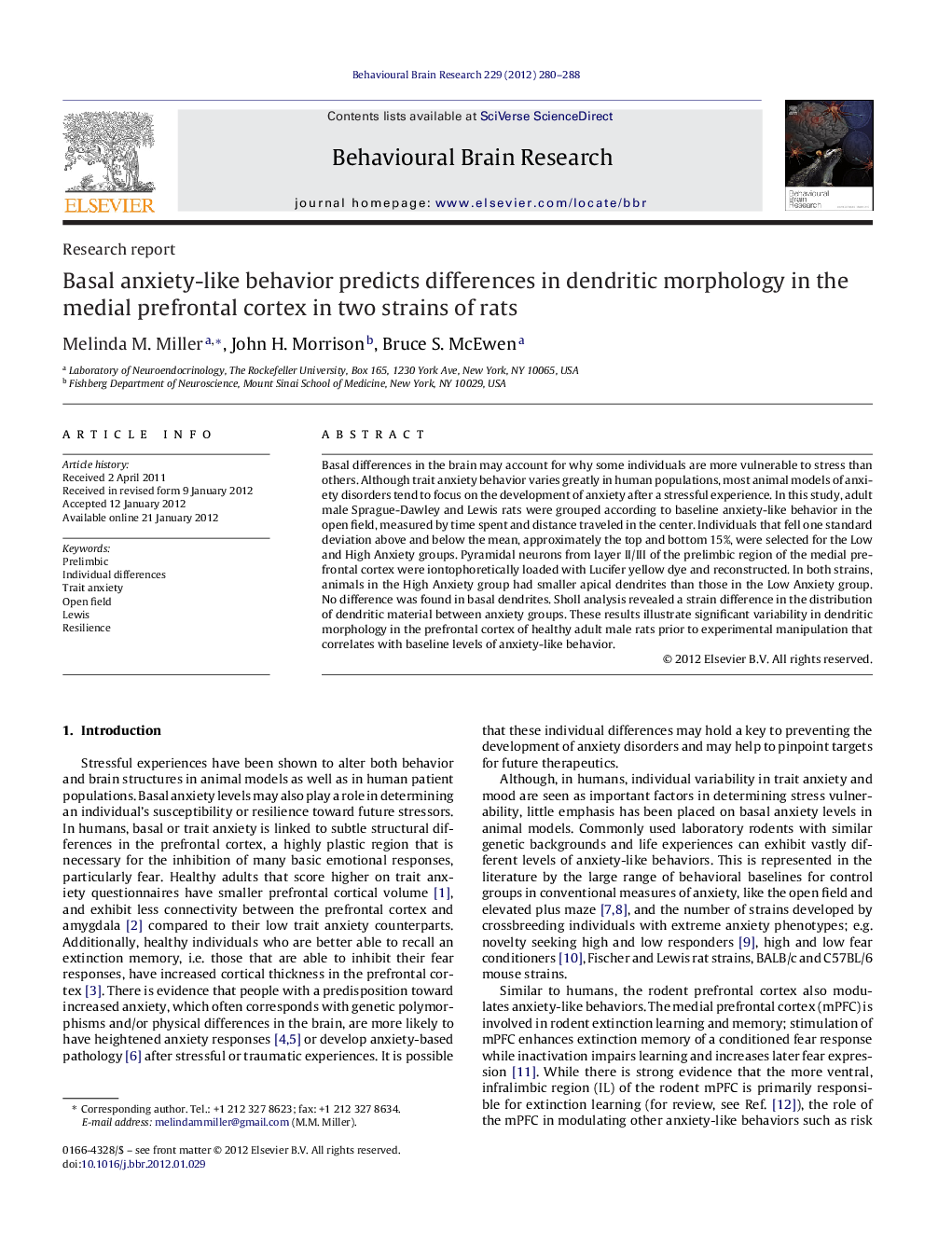| Article ID | Journal | Published Year | Pages | File Type |
|---|---|---|---|---|
| 4313373 | Behavioural Brain Research | 2012 | 9 Pages |
Basal differences in the brain may account for why some individuals are more vulnerable to stress than others. Although trait anxiety behavior varies greatly in human populations, most animal models of anxiety disorders tend to focus on the development of anxiety after a stressful experience. In this study, adult male Sprague-Dawley and Lewis rats were grouped according to baseline anxiety-like behavior in the open field, measured by time spent and distance traveled in the center. Individuals that fell one standard deviation above and below the mean, approximately the top and bottom 15%, were selected for the Low and High Anxiety groups. Pyramidal neurons from layer II/III of the prelimbic region of the medial prefrontal cortex were iontophoretically loaded with Lucifer yellow dye and reconstructed. In both strains, animals in the High Anxiety group had smaller apical dendrites than those in the Low Anxiety group. No difference was found in basal dendrites. Sholl analysis revealed a strain difference in the distribution of dendritic material between anxiety groups. These results illustrate significant variability in dendritic morphology in the prefrontal cortex of healthy adult male rats prior to experimental manipulation that correlates with baseline levels of anxiety-like behavior.
► Basal open field anxiety behavior was recorded in Sprague-Dawley and Lewis rats. ► Rats were selected for High Anxiety and Low Anxiety groups. ► Prelimbic pyramidal neurons in the High Anxiety groups had smaller apical dendrites. ► Apical dendritic size correlated with basal open field anxiety behavior.
